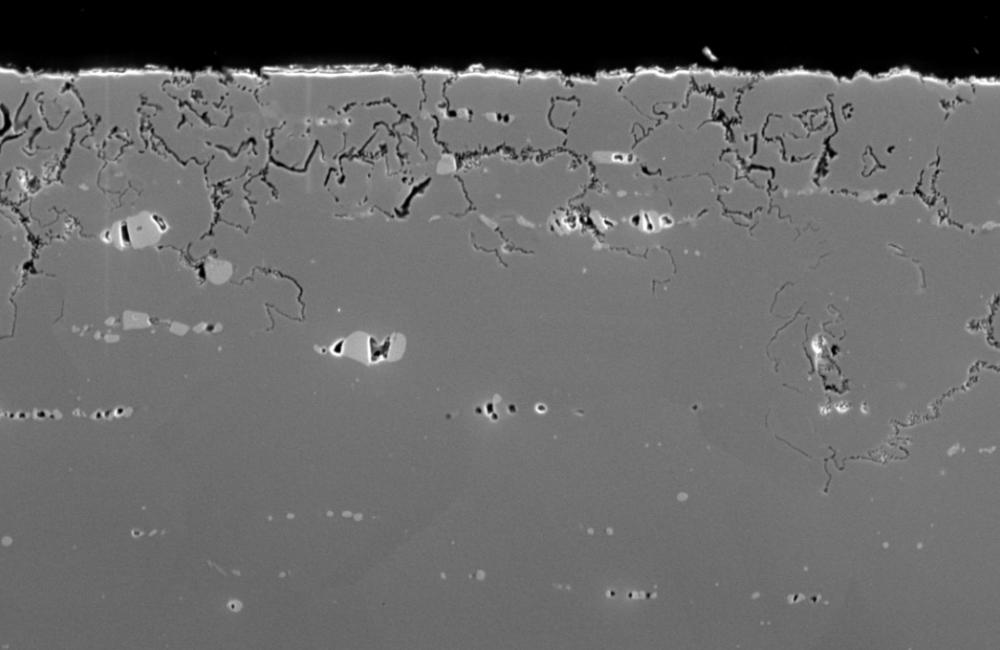February 4, 2019—Oak Ridge National Laboratory scientists analyzed more than 50 years of data showing puzzlingly inconsistent trends about corrosion of structural alloys in molten salts and found one factor mattered most—salt purity. Typically, alloys used in high-temperature environments are high in chromium, which forms barrier layers that slow corrosion. However, these barriers are unstable in nuclear reactors and concentrating solar power plants that use molten salts for heat transfer and storage. Absent the protective barriers, alloy chromium leeches into the salt, aided by oxidizing impurities. “We’ve got to throw out a lot of what we think about traditional corrosion science when we’re talking molten salts,” said ORNL materials scientist Stephen Raiman, who performed the analysis with ORNL data scientist Matt Sangkeun Lee. “Salt purification makes a big difference. Pure salts have much lower corrosion rate than impure salts.” Their published understanding will guide future experiments and models aimed at advancing robust, resilient materials. — Dawn Levy
At the salt–metal interface, thermodynamic forces drive chromium from the bulk of a nickel alloy, leaving a porous, weakened layer. Impurities in the salt drive further corrosion of the structural material. Credit: Stephen Raiman/Oak Ridge National Laboratory, U.S. Dept. of Energy
Topic:
Media Contact
Dawn Levy
, Senior Science Writer and Communications Specialist, Physical Sciences Directorate
, 865.202.9465
|
LEVYD@ORNL.GOV



